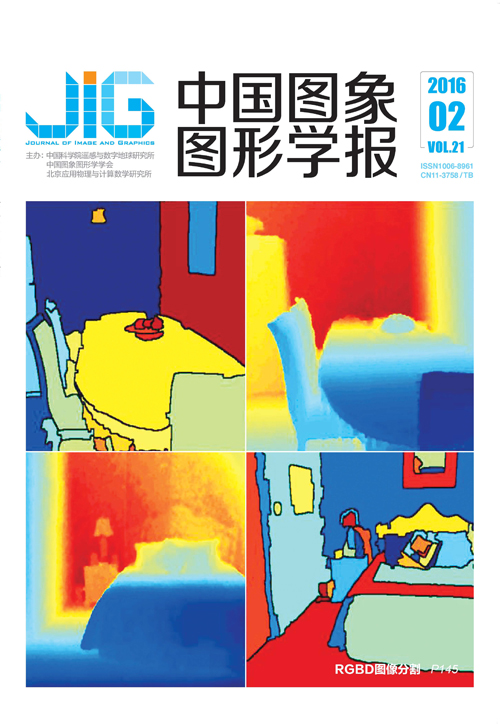
组合因子最优的线性预测波段选择
摘 要
目的 高光谱图像分辨率高,数据量大,信息的冗余程度高,给数据处理带来了很大的困难。为了高效地实现数据降维,使降维后的数据冗余度小且信息量大,提出一种基于组合因子最优的波段选择方法。方法 首先对高光谱数据进行波段子空间划分,在各子空间中通过线性预测误差来计算误差最小和次小的两个波段,结合它们的标准差,计算出它们的组合因子,通过比较组合因子来决定所要去除的波段。结果 该方法的计算效率高,相同条件下计算时间比最快的方法有轻微的减少。使用支持向量机(SVM)对波段子集分类,并将该方法与其他方法进行分类准确率比较,相同条件下比其他方法的最高准确率有1.5%的提升。结论 组合因子的方法综合考虑了波段子集的最小冗余度和最大信息量,得到了较好的波段子集,并且有较小的计算复杂度,适用于AVIRIS (airborne visible infrared imaging spectrometer)等各种高光谱图像数据。
关键词
Linear prediction band selection based on optimal combination factors
Fang Shuai1,2, Qu Chengjia1, Yang Xuezhi1,2, Liu Yongjin2(1.College of Computer and Information, Hefei University of Technology, Hefei 230009, China;2.Science and Technology on Electro-Optical Control Laboratory, Luoyang 471009, China) Abstract
Objective Hyperspectral remote sensors, which can collect data simultaneously in dozens or hundreds of narrow and adjacent spectral bands for each pixel, have been developed. However, the bands are usually highly correlated because of the fine spectrum resolution, thereby leading to great redundancy in hyperspectral datasets. Owing to the redundancy of data, utilizing all of the bands in an algorithm does not necessarily lead to an improvement in the results. These problems result in serious difficulties in data processing. To implement data dimensionality reduction efficiently and make the data exhibit minimal redundancy and considerable information after dimensionality reduction, a band selection method based on optimal combination factors is proposed. Method Coarse selection is implemented to remove bands with low informative content. Shannon entropy is utilized as a measure of informative content. For a large number of bands, subspace partitioning of the entire data is conducted. An adaptive subspace partition method that can automatically complete subspace partitioning is applied. In each subspace, by calculating the errors of two bands (one is minimized and the other is small), the reconstruction error is obtained by the linear predictive mode. Their combination factors are calculated with the product of their errors and standard deviation. The combination factors are then compared to identify which one to remove. The band that has minimized combination factors is removed. Autocorrelation matrix-based band selection, which utilizes the minimum linear prediction error as the selection criterion and searches the suboptimal subset by sequential backward selection (SBS), is employed. The proposed method uses the same SBS strategy to remove the band one by one until the desired number of bands is obtained. Finally, the bands selected in all subspaces are merged to a new set. Result The same dataset is utilized for experiments on time consumption and classification accuracy. The dataset was acquired with the airborne visible infrared imaging spectrometer (AVIRIS) in 1992. The dataset has 145×145 pixels and 220 bands with a range of 400 nm to 2 500 nm. The method has high computational efficiency, as revealed by experiments. Comparison of the computation time of all the four methods showed that the proposed method has a slightly shorter computation time. Support vector machine (SVM) has elicited much attention because of its capability to handle dimensionality compared with conventional classification techniques. Therefore, SVM is used in this study to classify the band subset. The classification accuracy of this method is approximately 1.5% better than that of others. Conclusion The method of combination factors considers the minimum degree of redundancy and the maximum information of the band subset. This method obtains the best band subset of the data, has minimal computational complexity compared with other methods, and is applicable to AVIRIS and other high-spectral image data.
Keywords
|



 中国图象图形学报 │ 京ICP备05080539号-4 │ 本系统由
中国图象图形学报 │ 京ICP备05080539号-4 │ 本系统由